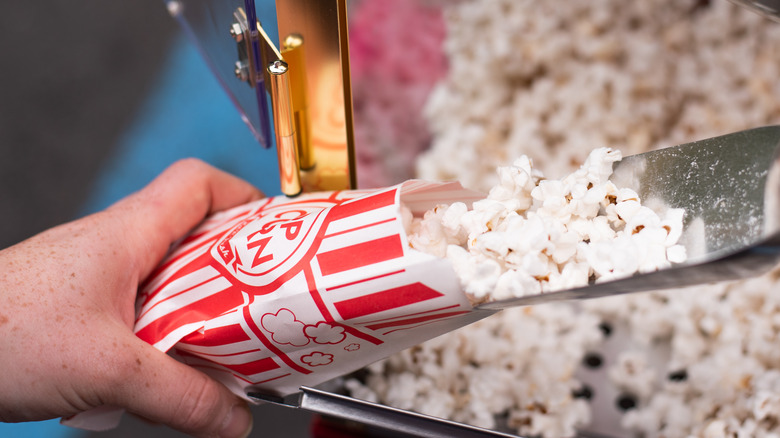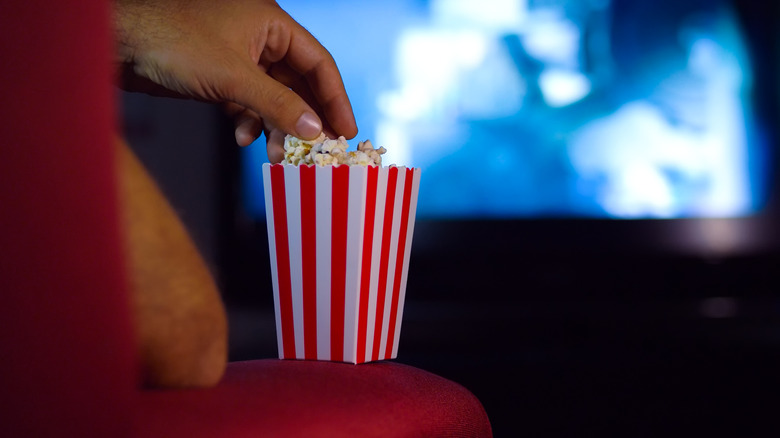Why Snacks Weren't Allowed In Early Movie Theaters
An outing at the movie theater elicits certain nostalgia. The salty smell of fresh popcorn, the feel of the plush reclining seats, the sound of chattering dying down as soon as the previews start rolling; it's a sensory experience through and through. Aside from the story on the screen, which is the main attraction, there are sodas being sipped, wrappers being crinkled, and other movie theater snacks being chewed, but the cinematic experience hasn't always been like this.
Many of us today can't imagine what it's like to go to a movie theater where food isn't allowed, and we're not just talking about the snacks you sneak in, either. This includes the popcorn — with the secret ingredient that makes it taste so good at the cinema — candy, pretzel bites, and Dippin' Dots that the theater sells. Now, purchasing this fare from the concession stand is an integral part of the pre-movie ritual. However, in early theaters, the experience was quite different.
Early movie theaters were serious about silence
In order to fully comprehend the no-snack policy from the past, it's important to remember that the first blockbuster films didn't have audible dialogue. Early motion pictures, often referred to as silent films, began to make their way in and out of American movie theaters in the 1890s, according to the National Museum of American History. Though silent films weren't actually completely silent, as they were often accompanied by live music of some sort, they retained the elegance of a live theatrical performance. Hence munching, crunching, and slurping were social discourtesies and strictly prohibited on account of the classy atmosphere (via Mental Floss).
Then "talkies," or films with dialogue, debuted in 1927 with "The Jazz Singer," the very first full-length film to include synchronized dialogue (per Britannica). By the 1930s, according to Kodak, silent films were a thing of the past. With dialogue now a part of Hollywood, movie theaters began to ease on their snack ban. Vendors initially sold the traditional cinema fare to movie-goers as they entered before theaters picked up on selling popcorn themselves (via Mental Floss). So next time you're at a movie theater with a bucket of perfectly buttered popcorn in one hand and a large soda in the other, you can thank the evolution of cinematic technology for your unhindered snacking privileges.

